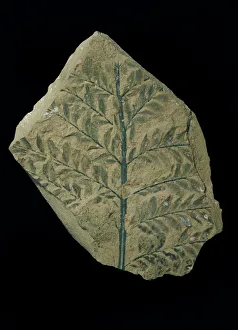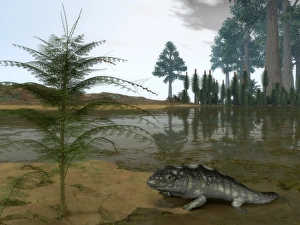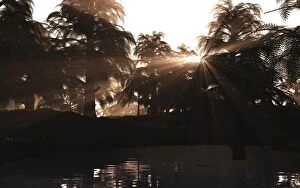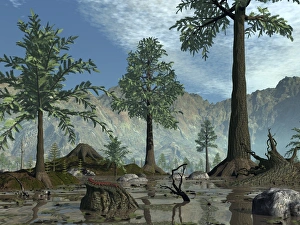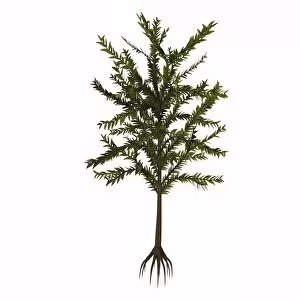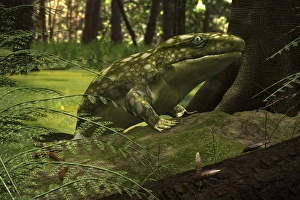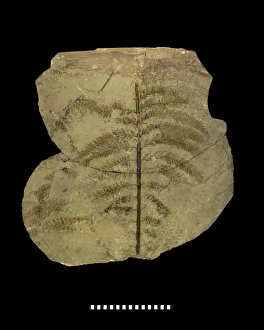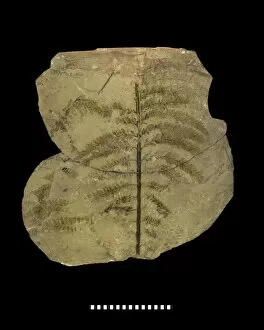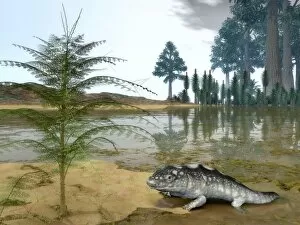Archaeopteris Collection
"Archaeopteris: A Glimpse into the Prehistoric World" Step back in time to the Late Devonian Period
All Professionally Made to Order for Quick Shipping
"Archaeopteris: A Glimpse into the Prehistoric World" Step back in time to the Late Devonian Period, where ancient landscapes were adorned with remarkable flora and fauna. Among them, Archaeopteris hibernica stands tall as a fossil plant that captivates our imagination. This prehistoric tree, isolated on a white background, showcases its intricate structure and leaves that once flourished millions of years ago. As the sun sets behind a forest plants, we witness the birth of Earth's first trees near the end of the Devonian period. These magnificent giants began populating vast areas such as floodplains and freshwater lakes. In this diverse ecosystem, an Ichthyostega emerges from the waters—a testament to life's adaptation from aquatic to terrestrial habitats. Dipterus fish also make their appearance in these ancient waters—Devonian freshwater lakes teeming with life. Their presence adds another layer to this vibrant tapestry of existence during this era. A close-up reveals an awe-inspiring three-foot-long Ichthyostega specimen from the Late Devonian Period—an extraordinary creature that thrived alongside Archaeopteris trees. Its fossilized remains provide valuable insights into our planet's past and evolution. Within limestone formations lies evidence of compression fossils like Archaeopteris—a reminder preserved for eternity. These remnants tell stories untold about Earth's history and offer scientists invaluable clues about how life evolved over time. One cannot overlook Dicroidium plants standing against a pristine white background—an intriguing contrast between simplicity and complexity within nature itself. Delve deeper into paleontological wonders with Archaeopteris hibernica—the fossilized tree that continues to amaze us even today. Fossil C016 / 4876 serves as a tangible link connecting us to an ancient world long gone but never forgotten. Let your curiosity guide you through time as you explore these relics of the past.

